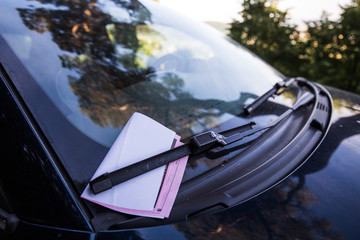Reduce the number of offenses and manage parking tickets automatically
As you will no doubt have noticed, the legislative context has changed since 1 January.er January 2017 for traffic offences committed with a vehicle registered in the name of a legal entity.

Since the law came into force, company directors have been obliged to inform the authorities of the identity of drivers who have committed a traffic offence... or face the consequences personally!
Worse still, the list of offences has been extended. These include the following offences, particularly those detected by or from an automatic control device: failure to wear a seatbelt, driving while on the phone, use of reserved lanes or hard shoulder, failure to keep a safe distance from the road, driving over solid lines, failure to obey road signs and, last but not least, the most common offence of all: speeding.
This endless list, coupled with the obligation to report, considerably increases the risks for company directors. Faced with this situation, what can be done to make drivers more responsible, meet legal obligations and preserve the liability of the company director?

The connected vehicle: the answer to limiting infringements and automating processing
In the early 2000s, on-board telematics systems were still in their infancy. Since then, they have made enormous progress, and today offer a wide range of effective services. Among them: geolocation, mission management, driving analysis, and even car-sharing or car-pooling. One of the most useful services is automated fine management.
Since 2006, Optimum Automotive, a specialist in connected vehicles, has developed an effective solution to limit infringements and automate the management of fines. This solution, to be implemented as of 2018 with the coming into force of the law, helps preserve the responsibility of the company manager.
To reduce infringements, a telematics box can only be installed in a company vehicle after employees have been informed. A well-informed employee is more cautious, which can reduce risky driving behavior.
However, achieving "zero offences" remains an elusive goal. On average, an employee at the wheel of a company vehicle commits three offences per year, and is issued with a fine. In large companies with many drivers, this can mean hiring a full-time fine officer.
Own vehicle or shared? How to identify the perpetrator.
There are 2 different situations, depending on whether or not the vehicle is assigned to a single driver.

In the case of a vehicle assigned to a single person :
The Optimum platform lists all drivers and their vehicles. Thanks to a permanent connection with ANTAI (Agence Nationale de Traitement Automatisée des Infractions), it immediately alerts the fleet manager. With a simple click, the fleet manager can confirm the identity of the offending driver. The fine is then sent directly to the person responsible. It is also possible to enter a reservation, for example in the event of vehicle theft.
By validating with a single click, the company fulfills its legal obligations. It also preserves the responsibility of the company director. This process saves time and reduces ancillary costs (mail, envelopes, postage). It also includes management costs if the vehicle is leased (LCD, LMD, LLD). It should be noted that, in this case, the installation of a telematics box is not necessary. Optimum Automotive also offers a non-connected version of its "Automated Fines Management" service.
In the case of a shared vehicle :
Another very common situation is when a company vehicle is used by several employees. How can you be sure of the identity of the driver at the time of the offence?

Optimum Automotive proposes to couple a driver identification system (RFID badge or Dallas key) to the telematics box. Before starting up the vehicle, each driver must identify himself with his personal key or badge. Once identification has been carried out, the principle remains the same: notification of the offence on the Optimum Automotive platform, confirmation of identity (or reservation) with ANTAI, dispatch of the penalty notice by the authorities to the driver concerned.
To find out more...
Traffic violations are a reflection of your drivers' driving behavior... but not all the time. When it comes to traffic offences and incivilities, the vast majority of cases are "not seen, not taken". And in this field, the company manager is subject to another obligation: risk preservation, including road risk. Here again, Optimum Automotive provides a concrete response with its "Driving Analysis" service, coupled with training services in partnership with Codes Rousseau.
To sum up, a company's fleet of vehicles represents a multitude of risks for the company director, which can expose him or her to various types of prosecution (particularly criminal prosecution). The connected vehicle provides a concrete and sustainable solution to limit this risk, whether in terms of traffic offences or, more generally, road risk prevention.
